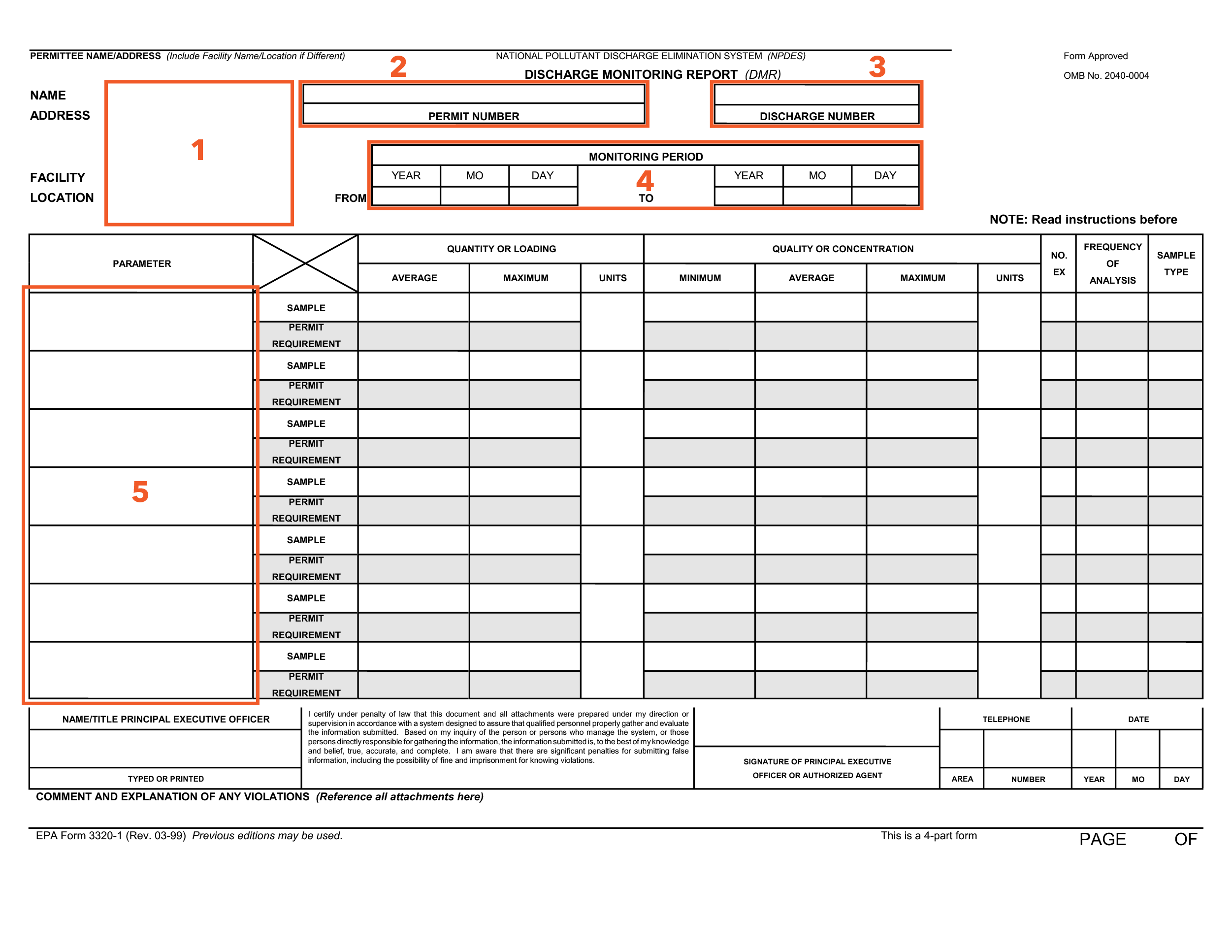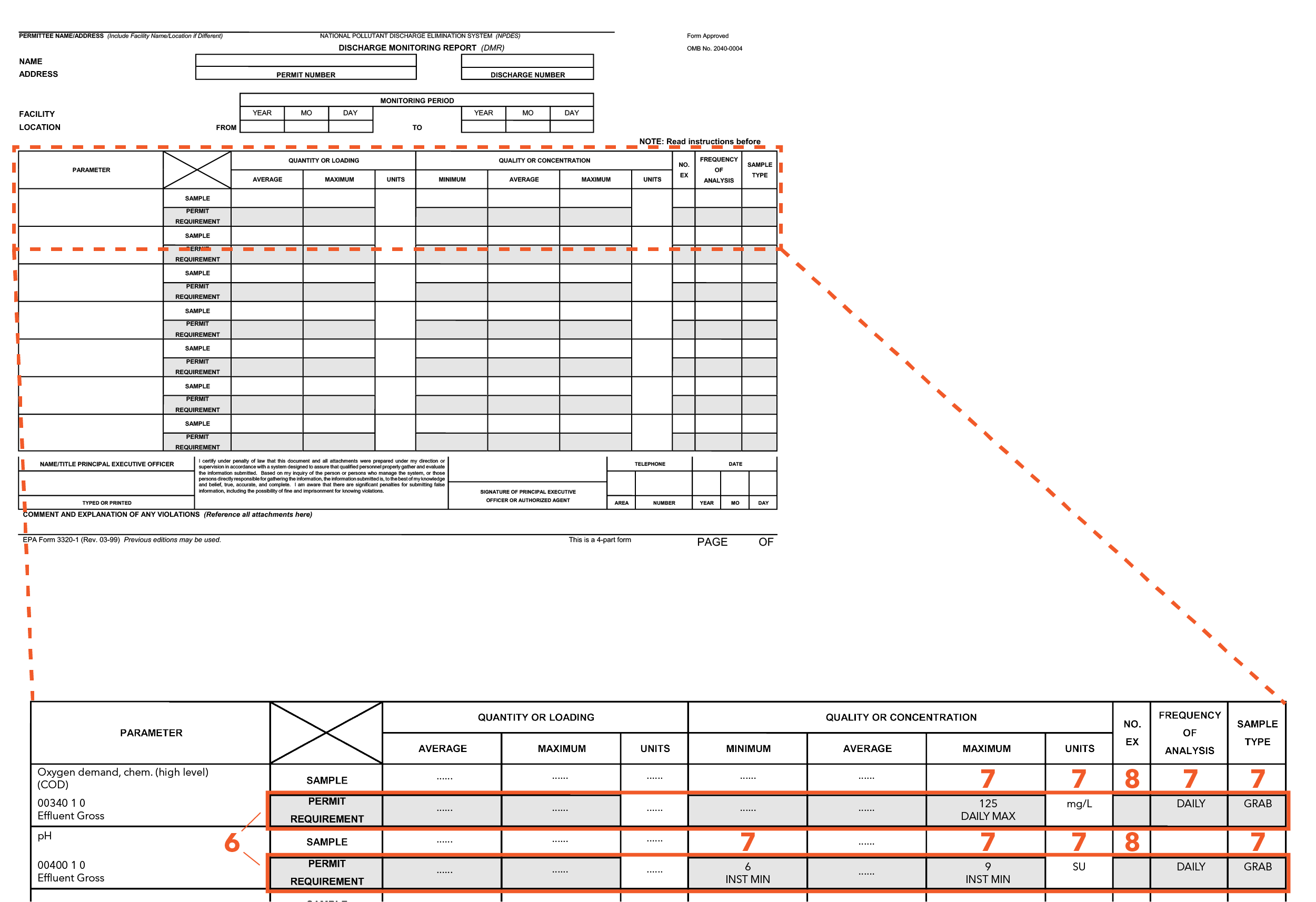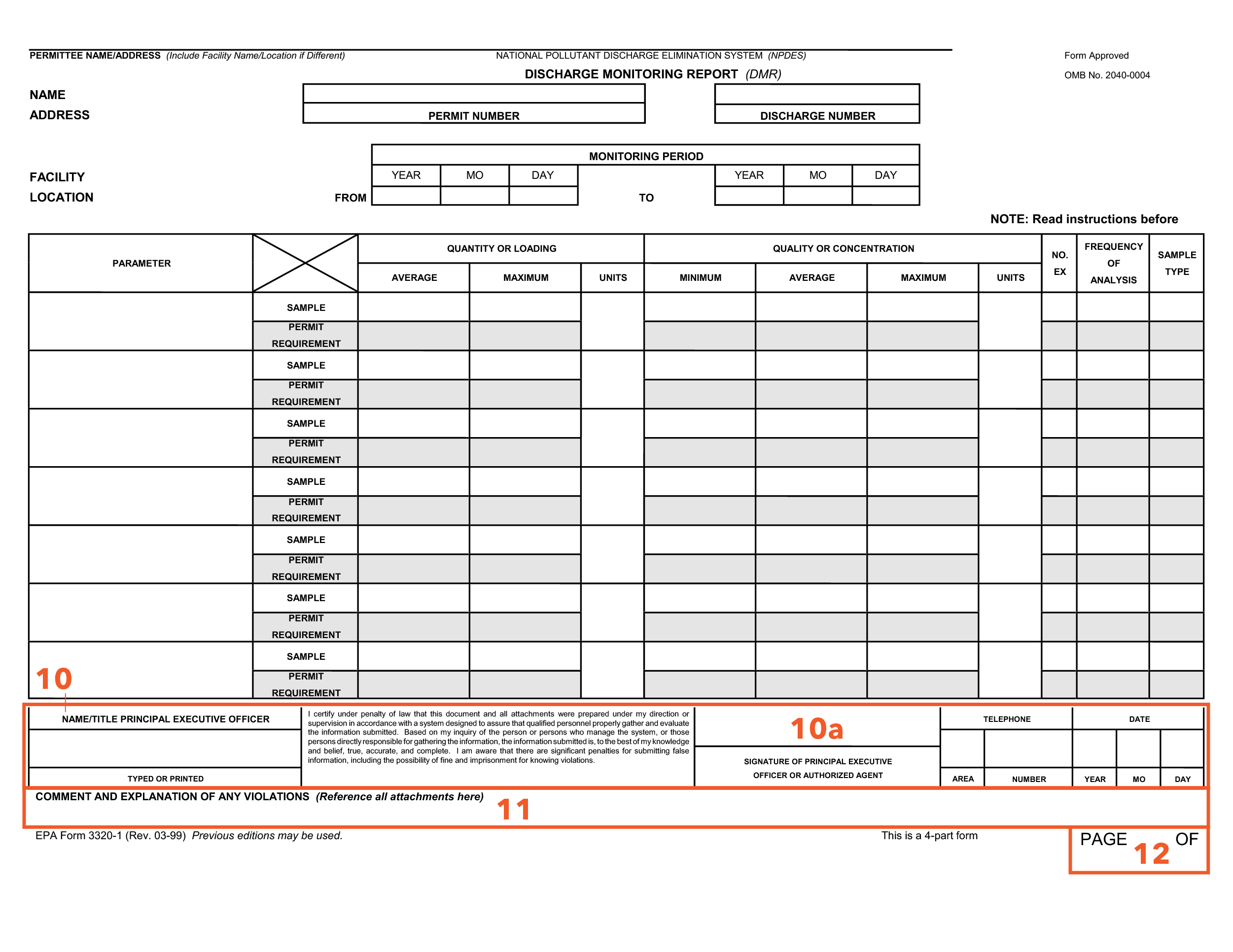InstituteEnvironmental EdgeWater ProgramsHow-To GuidesIndustrial WastewaterEnvironmentalWater QualityEnglishAnalysisFocus AreaUSA
Discharge Monitoring Reporting
This form is a template provided by EPA for reporting of industrial wastewater discharges, that are regulated by the National Pollutant Discharge Elimination System (NPDES). While this form used to be sent in as the official report record, today DMR submittal is most often done through online systems maintained by EPA or state agencies. Even with this change in reporting, this form is commonly used as a working document discharges use for internal recordkeeping.
Figure 1 – Basic form information
- Enter the permittee name, mailing address, and permitted location address, if different from mailing. These should match exactly those listed on the NPDES permit.
- Enter the NPDES permit number. This number is found in the most current version of the facility permit. It can be changed during permit renewals, check for updates following renewal.
- Enter the discharge number. A separate form will be needed for each discharge.
- Enter the dates for the monitoring period. Take note of the date format, and enter the data in year, month, day format. Ensure this monitoring period matches the timeframe required by reporting (calendar month, 30-day periods, first of month to first of following month, etc.).
- Enter each parameter being monitored. Examples of parameters include pH, total suspended solids (TSS), biological oxygen demand (BOD), and temperature.

Figure 2 – Parameter reporting
- For each parameter, first enter the “permit requirement” information across the sheet. This information will come directly from the permit and will remain unchanged from reporting period to reporting period. In the example below, there are only qualitative requirements for COD and pH (COD has a maximum daily limit of 125 mg/L measured with a grab sample and pH has an instantaneous minimum limit of 6 SU and maximum of 9 SU.
- In the “sample measurement rows” enter the actual measurement, frequency, and sample type for each parameter. Data will be required only in each block that lines up with permit requirements. For frequency of analysis and sample type, enter actual method of collection, even if different from required.
- In “No Ex.” enter the number of exceedances for each parameter. Do not leave blank. If no exceedances, enter “0.”
- If no discharges occurred during the monitoring period, enter “no discharge” in place of each sample measurement.

Figure 3 – Finalizing the report
- The signature block must be completed by the Principal Executive or Authorized Agent on file with the regulating agency. To complete this section, print or type their name, sign the center block (10a), enter the phone number, and enter the date of signature.
- Complete the comment section. If a violation occurred (exceedance of a permit condition, deviation from sample frequency or collection method, etc.) use additional pages to provide detail about the event and in this space reference those attachments. If you have no comments or attachments, include N/A to indicate it was not simply missed.
Attachments detailing violations should include: a brief explanation of the cause, a description of corrective actions taken, the date of each violation, and any other data required by the discharge permit. - A small, but often overlooked detail, is entering of the page numbers. This can serve a good secondary indicator that there are comments or violation details attached.

